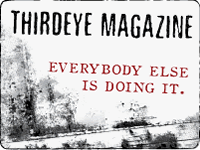Sculptor, installation artist, and photographer Margaret Inga is in the practice of documenting alternate realities. Growing up in North Carolina, she was exposed to a myriad of untouched landscapes that felt strangely unsettling and almost unreal – a feeling she’s still trying to catch with her installation-based photography.
“There was always something really interesting about photography’s ability to create fictional worlds,” comments Margaret. Expanding upon this concept, her images are much more than just point-and-shoot-tom-foolery.
Traditional sculpture (utilizing mostly clay, plaster, and wood) is undertaken to build the majority of her imagery. This includes modeling half-abstract fossils, bones, as well as life-size animal parts. Sometimes traditional taxidermy is utilized, while often fabric is sewn to create artificial foliage or texture. Virtually every component is then painted, composed, epoxied, and varnished over. These elements are then inserted into a natural environment, or, even more likely, a set that is built from the ground up to create a completely fabricated scene. The artist’s aim with these meticulous sets is to completely sidestep “captured” images in photography with images entirely of her own making.
“These images are constructed realities; installations built to retain an atmosphere of ambiguity, chance, and unconscious associations,” explains the artist. “The resulting photograph documents places, objects, and animals transformed beyond usual recognition.”
Margaret studied art in New York at Columbia University. After spending summers eking out a living in darkrooms and print shops, she moved on to obtain a Masters at Pratt Institute with her interests focused on combining illustration, photography, typography, design, and narrative. Her projects soon developed from small graphic novels into the large-format constructed sets she now creates.
Currently, Margaret is living and working on New York’s Lower East Side where she continues to explore the limitations of creating imaginary ontologies.











No Comments so far ↓
There are no comments yet...Kick things off by filling out the form below.